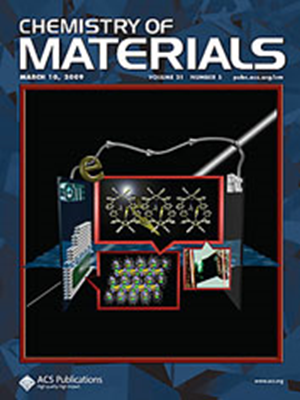气体扩散电极的实验室规模流动电池CO2电解槽的设计和测试指南
IF 7
2区 材料科学
Q2 CHEMISTRY, PHYSICAL
引用次数: 0
摘要
二氧化碳电解槽是实现化学工业电气化和脱碳的关键技术。通过对催化剂、气体扩散电极(GDEs)和系统设计的研究,CO2电解取得了重大进展。虽然存在一些关于电分析技术和电解槽操作的指南,但仍然需要一个全面的指南来解决电解槽设计考虑及其与实验过程参数的关系。在此,我们提出了使用gde设计和测试实验室规模的流动电池(F-cell)电解器用于二氧化碳电解的一般指南。这个过程从基本的设计原则开始,然后是原型设计和材料选择,最后是制造和组装说明。该电解槽分别使用商用银基和铜基催化剂对CO2转化为CO和C-C产品进行基准测试,并演示了几种诊断工具用于表征f电池电解槽中GDE的性能。此外,我们表明电解槽与各种GDE衬底兼容,包括碳纸基和聚合物膜基气体扩散层以及金属网状电极。我们期望这里提出的原则和指导方针将帮助研究人员进入二氧化碳电解领域,并激发针对他们特定研究需求的创新电池设计。本文章由计算机程序翻译,如有差异,请以英文原文为准。

A Guide to the Design and Testing of a Lab-Scale Flow Cell CO2 Electrolyzer with Gas-Diffusion Electrodes
The CO2 electrolyzer is a pivotal technology for enabling the electrification and decarbonization of the chemical industry. Significant advancements in CO2 electrolysis have been achieved through research focusing on catalysts, gas-diffusion electrodes (GDEs), and system design. While several guides on electroanalytical techniques and electrolyzer operation exist, a comprehensive guide addressing cell design considerations and their relationship to experimental process parameters is still needed. Herein, we present general guidelines for designing and testing a lab-scale flow cell (F-cell) electrolyzer for CO2 electrolysis using GDEs. The process begins with fundamental design principles, followed by prototyping and materials selection, and culminates in manufacturing and assembly instructions. This electrolyzer is benchmarked using commercial Ag- and Cu-based catalysts for CO2 conversion to CO and C-C products, respectively, and several diagnostic tools are demonstrated for characterizing GDE performance in a F-cell electrolyzer. Furthermore, we show that the electrolyzer is compatible with various GDE substrates, including carbon-paper-based and polymer-membrane-based gas-diffusion layers as well as metal mesh electrodes. We anticipate that the principles and guidelines presented here will assist researchers entering the field of CO2 electrolysis and inspire innovative cell designs tailored to their specific research needs.
求助全文
通过发布文献求助,成功后即可免费获取论文全文。
去求助
来源期刊

Chemistry of Materials
工程技术-材料科学:综合
CiteScore
14.10
自引率
5.80%
发文量
929
审稿时长
1.5 months
期刊介绍:
The journal Chemistry of Materials focuses on publishing original research at the intersection of materials science and chemistry. The studies published in the journal involve chemistry as a prominent component and explore topics such as the design, synthesis, characterization, processing, understanding, and application of functional or potentially functional materials. The journal covers various areas of interest, including inorganic and organic solid-state chemistry, nanomaterials, biomaterials, thin films and polymers, and composite/hybrid materials. The journal particularly seeks papers that highlight the creation or development of innovative materials with novel optical, electrical, magnetic, catalytic, or mechanical properties. It is essential that manuscripts on these topics have a primary focus on the chemistry of materials and represent a significant advancement compared to prior research. Before external reviews are sought, submitted manuscripts undergo a review process by a minimum of two editors to ensure their appropriateness for the journal and the presence of sufficient evidence of a significant advance that will be of broad interest to the materials chemistry community.
 求助内容:
求助内容: 应助结果提醒方式:
应助结果提醒方式:


